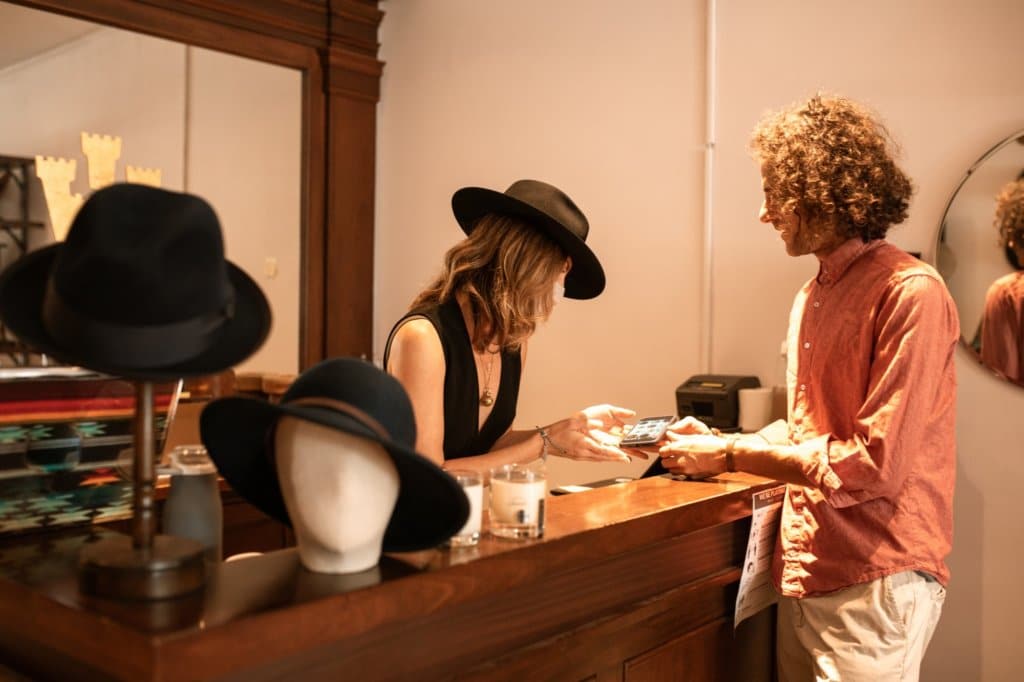The dramatic shift online in the wake of COVID-19 is already producing eCommerce leaders and stragglers. Brands and retailers are continually experimenting with how to create a customer experience that sticks to bring in repeat business from the wave of new shoppers they’re seeing online as brick-and-mortar takes a backseat.
In our most recent webinar, I sat down with Douglas Hollinger, VP of Strategy at BVA, a leading commerce agency that incubates and grows direct-to-consumer (D2C) brands, including Chubbies, MVMT, and Thrive Causemetics.
We chatted about customer experience in the new eCommerce landscape, how to adjust your business and planning models to allow for agility in uncertain times, and how to retain an entrepreneurial mindset amid changing consumer expectations.
Watch the video for the full conversation or check out some of the highlights below (edited for clarity).
Why Agility is Critical for Customer Experience in the New Normal
Syte: This is a very disruptive time. We have new types of shoppers, all online now with completely different expectations for customer experience. What are the main challenges or opportunities that you’re seeing for retail brands in this new situation?
Doug: What we’re seeing now, at a minimum, is an acceleration. A lot of analyses are saying that COVID-19 accelerated consumer behavior five years into the future in terms of adoption, trends, and shopping online. Companies are also forced to accelerate to become more eCommerce-centric or more D2C-focused.
It’s obviously also a very scary time — and some industries are impacted much harder than others, such as hospitality and travel. We see brands struggle because they were depending on other channels or planning to open retail space, and they’ve had to pivot to eCommerce. At the same time, we also have clients facing the opposite problems — managing so much demand and facing issues in the supply chain, fulfillment, and shipping.
We’re focused on working with our clients to be prepared to act more quickly. When normal planning cycles, expectations, cadence, or seasonality of commerce is disrupted like this, brands have to ask how they can become not just digitally oriented but also more agile. They must have the ability to react to the market and to chart a path forward when all the rules are up in the air.
Maintaining Brand Authenticity When Loyalty is in Flux
Syte: The brands that were able to pivot back in March and April not only see traffic booming by 50% but are also maintaining that same percentage of growth in revenue and sales. What’s your advice for brands that now see a lot more customers than they used to have on their website? What’s a good focus area for them?
Doug: Brands have to be mindful, know who these customers are, and understand how to qualify the influx. Regardless of where customers come from and what they have to offer, brands need to stick to their personality. It’s better to be authentic and transparent, and try to not be too responsive to every little thing that comes through.
Brands need to know who they are, what direction they’re going, and then, be flexible along the way. When brands have a strong sense of self and purpose, they’re going to attract and retain the right people that are a match for them.
Brand loyalty is in flux, too. People are trying new things — sometimes out of necessity. So, there’s a higher premium on being the authentic brand and expressing it in every interaction: from the first time brands acquire customers to the fulfillment processing, and even when they’re opening the box or experiencing the product.

Innovating in Step With Shoppers’ Changing Needs
Syte: eCommerce is probably one of the most fast-paced industries. What do you think innovation looks like now for eCommerce?
Doug: In light of COVID-19, brands can be creative with what they have. As an example, a couple of our clients are leveraging store associates, who are brand ambassadors, to help people find the right fit through digital channels instead of in-store. It can be almost like a VIP experience. So, they’re using what they already have but doing it in a fresh way, and then learning from it.
And that’s the next thing — evaluating if what you’re doing is working. Brands need to have a “test and learn” attitude. The key is taking the right learnings and then applying them back. Then, they might discover an opportunity for new technology to be smarter, to leverage data better, or to have machine learning inform campaigns and decisions.
I also think the innovation cycle is shorter than it was 10 years ago. Nimbleness comes into play everywhere, from assets and resources to budgets and planning cycles. We used to work up a 12-month plan, now who knows what’s going to happen in 12 months? Let’s focus on the next 6-8 weeks. We’re seeing a compression of planning cycles and flattening of the approval processing so people that can change and impact things are empowered to do it in a more rapid way.
Syte: It’s as if companies are pushed to reinvent their business models.
It touches on how they operate, what they do with their employees, how they allocate their resources, and how they move information from one place to the other in a way that’s very effective and allows the business to run very fast. To see this kind of rethinking about the business model from cycles of 25 years to five months is very impressive.
Doug: It’s almost like we’re in a lab right now. Most companies are facing the same thing. We’re on even ground and consumers understand some of the challenges that are happening all at the same time. So, that provides more incentive to go ahead and try some stuff because people can be a little more forgiving.
Syte: If we twist the conversation around from the company’s perspective to the consumer’s point of view, where do you see innovation coming into play there? Are they a bit more open to trying new things?
Doug: Consumers are open, especially in certain categories, to shift when there’s not a huge burden on them to do something different. eCommerce is a very easy way to engage with new brands and find new things, and then try it at home without risk. That’s why we’re seeing some of our clients, that were not necessarily D2C, paying attention now to eCommerce as a driver. Because loyalties are shifting, and they can’t reach their target customers through other ways.
Consumers are in experimental mode. They’re more ready and willing to try new things outside of their comfort zones. That’s more good news for eCommerce and D2C brands.

Predictions for the Future of Omnichannel Customer Experience
Syte: There are many innovative solutions that brands can consider. Looking to the next three years, what should brands keep an eye on, in terms of emerging trends?
Doug: Technology helps businesses, but business problems are still the same. Being of value, being sticky, finding a niche, and talking to that audience will always be important.
Consumers will expect more and more personalization. Being smart about leveraging tools that tailor and personalize experiences will make companies stronger. There’s going to be a continued acceleration of AI and business intelligence. Data will be even more important. The best brands are the ones that know what to do with it and enable themselves to do so quickly or in real-time versus big planning cycles like we used to. Brands that are behind or don’t trust that kind of learning or AI are going to struggle.
The brands that win will be the ones that are in tune with consumer sentiment. The ones that are clearly able to draw a very bright line between who they are, what they’re offering, and what consumers need and feel. That’s not anything new, but I think it’s harder to do when everything feels off-kilter and fresh.
Syte: Right, and brands will be able to leverage the data that they have online in a real-world setting. Maybe we’ll see a whole new customer experience in retail, advanced in-store experiences that for the consumer would feel as seamless as online shopping.
Doug: Physical retail being hurt even more by the pandemic accelerates store innovation. People still want public spaces, and we’re going to see an acceleration in the way digital and physical interacts — whether that’s smarter stores where brands provide consumers with tools to carry or if they enable store associates to be more connected so that they’re smarter about who walks in.
Over the next 2-3 years, some people are going to get in-store innovation and experiences right. We’re going to see some really interesting store concepts that come out from the hard lessons of this year, and maybe next year, too.